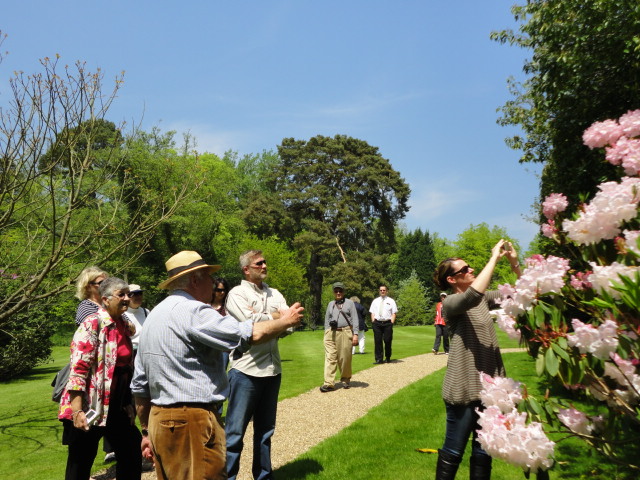Kew Gardens
In the early 18th century Prince George, with his wife Caroline, developed a garden and landscape park at Richmond Lodge next to the River Thames at Kew. In 1727 they were crowned George II and Queen Caroline. In the early 1730s their son Frederick, now Prince of Wales, bought the adjacent Kew House and leased lands to establish an estate that ran parallel to his parents’ grounds. These two estates are the basis of Kew today. Queen Caroline hired Charles Bridgeman and William Kent to transform her Richmond Lodge estate into the latest naturalistic fashion. There were groves of trees, water features, a canal garden, many different follies, and a riverside walk.
Prince Frederick was a keen gardener and while he appreciated the Landscape Movement, he also wanted a botanical collection. Having transformed Kew House into a new palace known as the White House with the help of William Kent, he set about transforming his garden to include a large lake, follies, and many hundreds of interesting trees. He died in 1751. His widow Princess Augusta carried on his ideas, founding a botanic garden in 1759 on nine acres of land east of the White House. There, with advice from her gardener William Aiton, her botanical adviser Lord Bute, and architect Sir William Chambers, she created a landscape garden that was the envy of many.
George III, son of Frederick and Augusta, inherited both the Kew and Richmond estates and merged them in 1802. ‘Capability’ Brown was commissioned to redesign the Richmond garden and swept away many of Caroline’s follies and features. The White House was demolished.
Internationally known, and primarily a botanic institution, Kew’s delightful and varied grounds cover 300 acres and offer something of interest for everyone. Most of the plants are wild species rather than garden varieties, but it is a perfect place to come and discover new plants, impeccably labeled and well grown. There is the Queen’s Garden in the style of a 17th century garden behind the intimate Kew Palace. A Grass Garden grows over 600 grasses. There are 2,000 species in the Herbaceous Garden alone, and there are the Cambridge Cottage Gardens, and a Heather Garden. In May and June the Bluebell Wood is at its best and the lilacs are in flower. There is a formal Rose Garden by William Nesfield beside the Palm House (designed by Richard Turner and Decimus Burton). There are four Temples, the famous Chinoiserie Pagoda (designed by Sir William Chambers in 1751) and the charming Queen Charlotte’s Cottage. The Marianne North Gallery holds a large collection oil paintings of plants. In the Princess of Wales Conservatory are mangrove swamps, deserts, carnivorous plants and orchids. Nearby is the Davies Alpine House. There are hundreds of beautiful trees from conifers to eucalyptus, mulberry to walnut. A wood museum houses specimens of different woods and inlay work and a history of the manufacture of paper.
Kew was initially a child of the 18th-century Enlightenment movement, and has been the pivot of plant hunting and botanic research ever since. Sir Joseph Banks the wealthy amateur scientist who accompanied Captain Cook on his 1768 and 72 expeditions to the Pacific, was appointed horticultural and botanical advisor to the Gardens In 1771. Sir Joseph Hooker the well known plant hunter became one of its Directors. Kew is big and holds an astonishing abundance of garden and scientific knowledge for everyone.

 Passionate about beautiful gardens? Experience the finest gardens on one of our small and friendly group tours.
Passionate about beautiful gardens? Experience the finest gardens on one of our small and friendly group tours.
 Ready to book?
Ready to book? 
